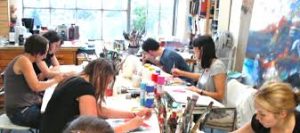Ever tried watercolor painting and felt like you were herding cats? You’re not alone. Watercolors can be as unpredictable as a toddler on a sugar rush the tingology. But, oh boy, when you get the hang of it, the results are worth every ounce of frustration.

First off, let’s talk about wet-on-wet technique. This one’s like dancing in the rain—literally! You wet your paper first and then add your colors. The paint spreads out like gossip at a family reunion. It’s great for creating soft backgrounds or dreamy skies. Just remember to keep an eye on it; things can go from fab to drab real quick if you’re not careful.
Next up is dry brush technique. Imagine trying to paint with a toothbrush that’s seen better days. Sounds weird, right? But it works wonders for adding texture. Dip your brush in paint but dab off most of it before hitting the paper. You’ll get these cool, scratchy lines perfect for fur or rough surfaces.
Now, have you ever heard of glazing? No, we’re not talking donuts here—though I wouldn’t mind one right now! Glazing involves layering transparent washes over each other once they’ve dried. It’s like stacking colored cellophane sheets to create depth and richness in your painting.
Then there’s lifting out color. Made a mistake? No worries! Just take a damp brush or sponge and lift that bad boy right off the paper. It’s like having an undo button in real life.
Speaking of mistakes, let me tell you about my first attempt at using masking fluid. I thought I was Picasso reincarnated until I realized I’d splattered more on myself than on my artwork! Masking fluid is brilliant for preserving white areas while you splash around with other colors. Just make sure it dries completely before peeling it off—or else you’ll end up with a sticky mess reminiscent of chewing gum in hair.
Let’s chat about gradients next—smooth transitions between colors that look as seamless as butter melting on hot toast. Start with one color and gradually add water to lighten it as you move across the paper. Or blend two different hues together for an ombre effect that’ll make people think you’ve got magic up your sleeve.
Ever tried salt sprinkling? Nope, this isn’t cooking class but grab that salt shaker anyway! Sprinkle some salt onto wet paint and watch crystals form interesting patterns as they absorb moisture and pigment alike.
Don’t forget about blooms either—the good kind! Drop some water into still-wet paint spots and watch them spread out like ripples in a pond after tossing pebbles into it.
And hey, don’t underestimate simple splattering techniques either! Load up your brush with watery pigment then flick those bristles towards your canvas (or maybe do this outside unless redecorating walls Jackson Pollock-style appeals).
Finally—and trust me on this—experimenting will become second nature over time; treat each session less like rocket science more akin childlike exploration where serendipity reigns supreme!
So grab those brushes—you’ve got this! Dive headfirst into watercolors without fear because even seasoned artists started somewhere chaotic too… just ask Van Gogh (minus ear drama).